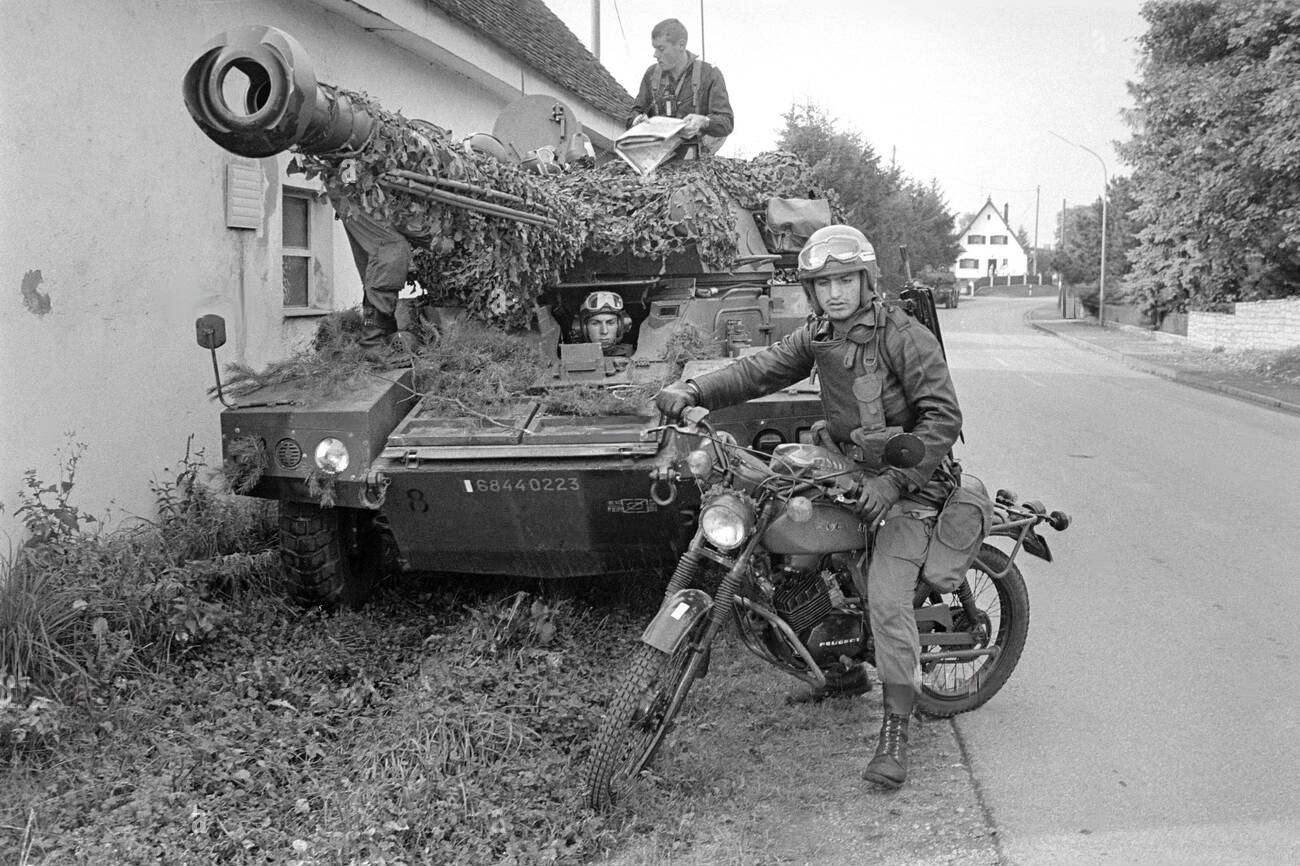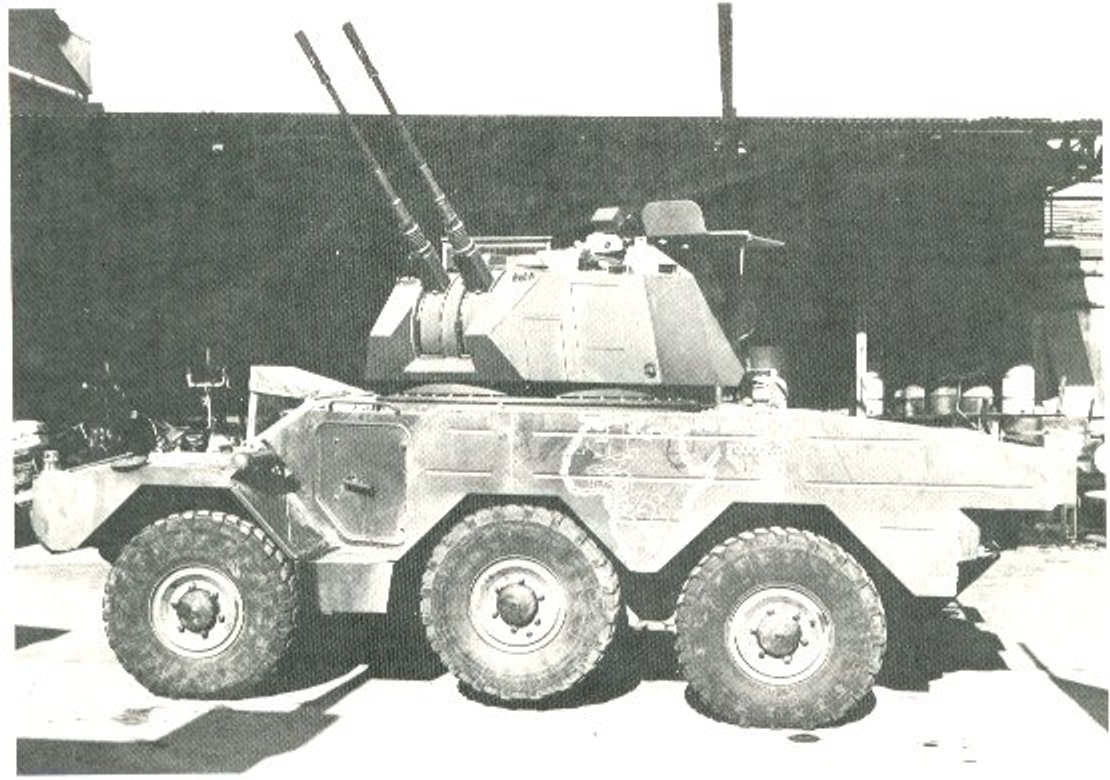- Yes
- No
Tell me, have you ever been in your AMX-13 DCA 40, only to eat the dust of some R3 T20 going well over twice your speed? Have you ever been jealous of how fast some of those other anti-aircraft vehicles can fire? Well, mes amis, your trouble is over. Presenting the ERC 20 Kriss! Based on the Panhard ERC chassis, the ERC 20 Kriss offers mobility and firepower by way of a SAMM TAB220 turret mounting two 20mm M621 autocannons. The firepower will allow you to take down those pesky aircraft, while the mobility will allow you to metaphorically and literally catch up with the competition. The ERC 20 Kriss will also allow French players to fill the unfortunate gap between the AMX-13 DCA 40 and the AMX-30 DCA. With that being said, let’s take a deep dive into the ERC 20, shall we?
History
Spoiler

A French ERC 90 of the Franco-German Brigade during exercises in Bavaria, September 1987.
Developed as a private venture by the famous Panhard company in the late 1970s, the ERC was aimed at the export market from the start, intended as a follow up to the extremely successful AML. The vehicle received orders from a few nations until the French Army placed an order in December of 1980 for the ERC 90 F4 ‘Sagaie’ variant, equipped with a 90mm F4 gun. While the AMX-10RC would soon see service with the French Army in 1981, the ERC 90 was better suited towards fast deployments and mobile operations, as it could be transported in the Transall C-160 that the AMX-10RC would be too large and heavy for.
During the 1981 biannual Satory exhibition, French companies were able to showcase some of their latest technology. Tucked away at the rear of the Panhard stand was a vehicle that had an ERC 90’s chassis, but the turret wasn’t the same. Derived from the SAMM S530 turret, this new vehicle mounted the improved SAMM TAB220 turret, equipped with two 20mm M621 autocannons. Firing 750 rounds per minute for a combined total of 1,500 rpm, the vehicle boasted impressive air defense capability. It was named the ERC 20 Kriss, with Kriss being the French word for a type of Indonesian dagger, fitting in with the theme of the ERC 90 ‘Sagaie’ being nicknamed after a weapon. Each gun carried 280 rounds for a total of 560 rounds total, and the guns could elevate from -10° to +70°, and the M411 sight featured a 1x magnification, allowed for a horizontal FOV of 77°, and a vertical FOV of 32°. Included in the sight was a graticule for up to 1,300 meters in range, as well as marks for tracking aircraft. Seven L794B periscopes allowed for a 360° view for the turret crew. Unlike many anti-aircraft platforms of its day, the ERC 20 Kriss had no targeting or tracking radar, meaning the crew had to manually track targets.
While it provided a mobile and effective air defense system, only one country bought the ERC 20 Kriss in the end, Gabon. Along with 6 ERC 90 F4 Sagaie, Gabon also purchased 4 ERC 20 Kriss, all of which were still in active service as of 2021. Ultimately, the ERC 20 Kriss found a home, and served its role as a mobile anti-aircraft platform at the same time.
Specifications
Spoiler
- Mass: 8.3 t
- Length: 5.1 m
- Width: 2.49 m
- Height: 2.5 m
- Crew: 3 (Driver, gunner, commander)
- Armament: 2× 20mm M621 cannons
- Ammunition stowed: 280 rpg, 560 total
- Defensive armament: 2×2 smoke dischargers
- Engine: 155 hp Peugeot V6 petrol
- Maximum speed: 95 km/h
- Maximum range: 700 km
Sources
Spoiler
- International Defense Review 1981-08 article on Satory VIII
- ERC 20 Kriss
- Army Guide
- French Wheeled SP Antiaircraft
- https://weaponsystems.net/system/63-ERC-20 Kriss
- Cullen, T., & Foss, C. F. (1992). Jane’s land-based air defence: 1992-93. Jane’s Information Group.



